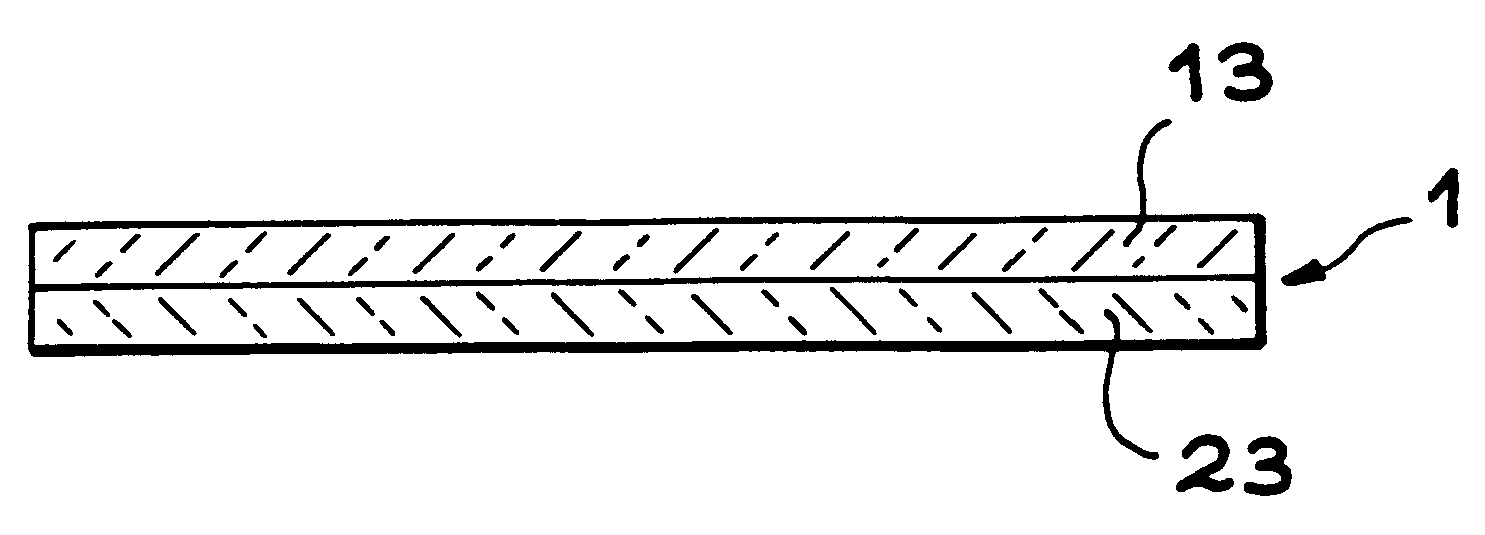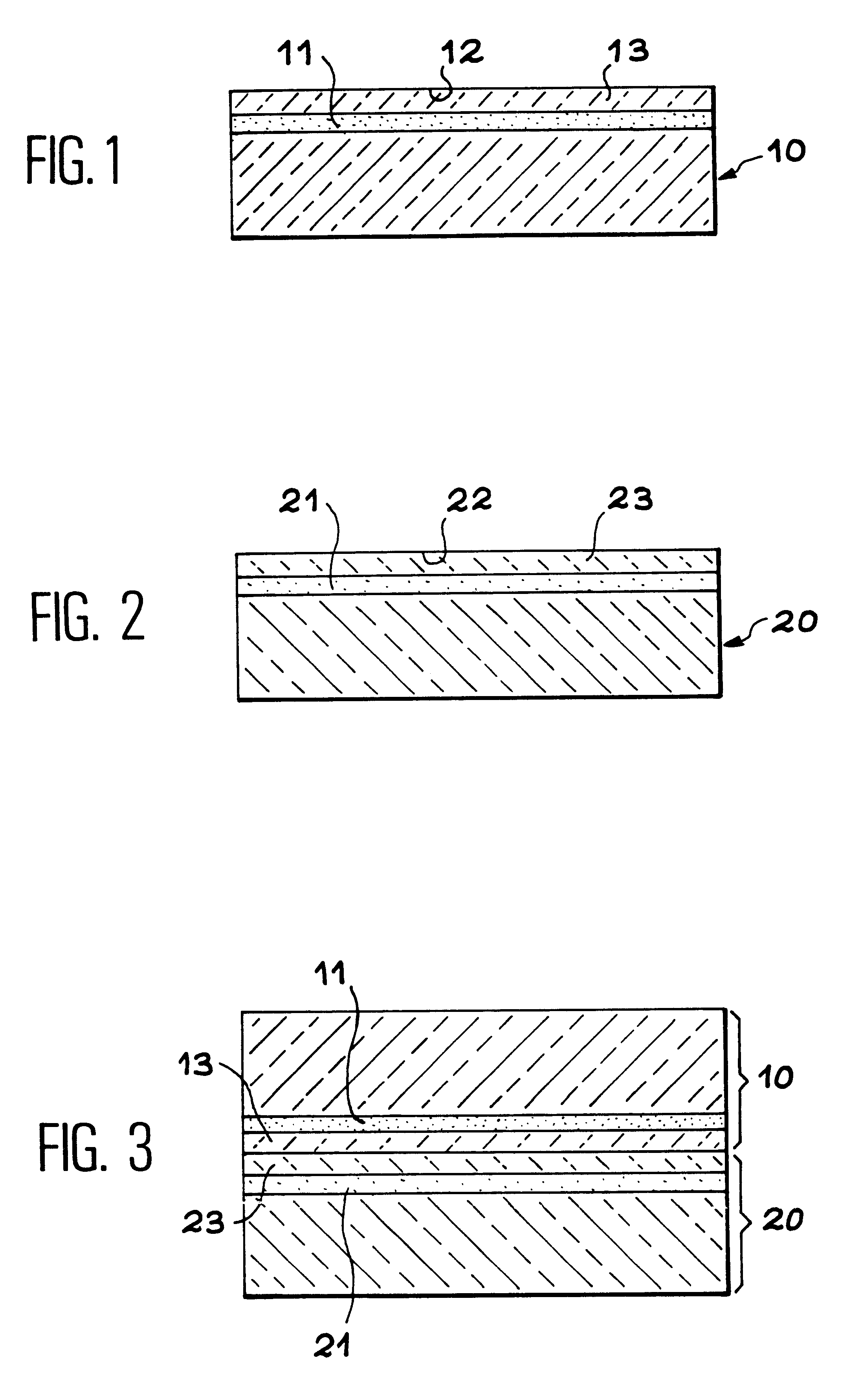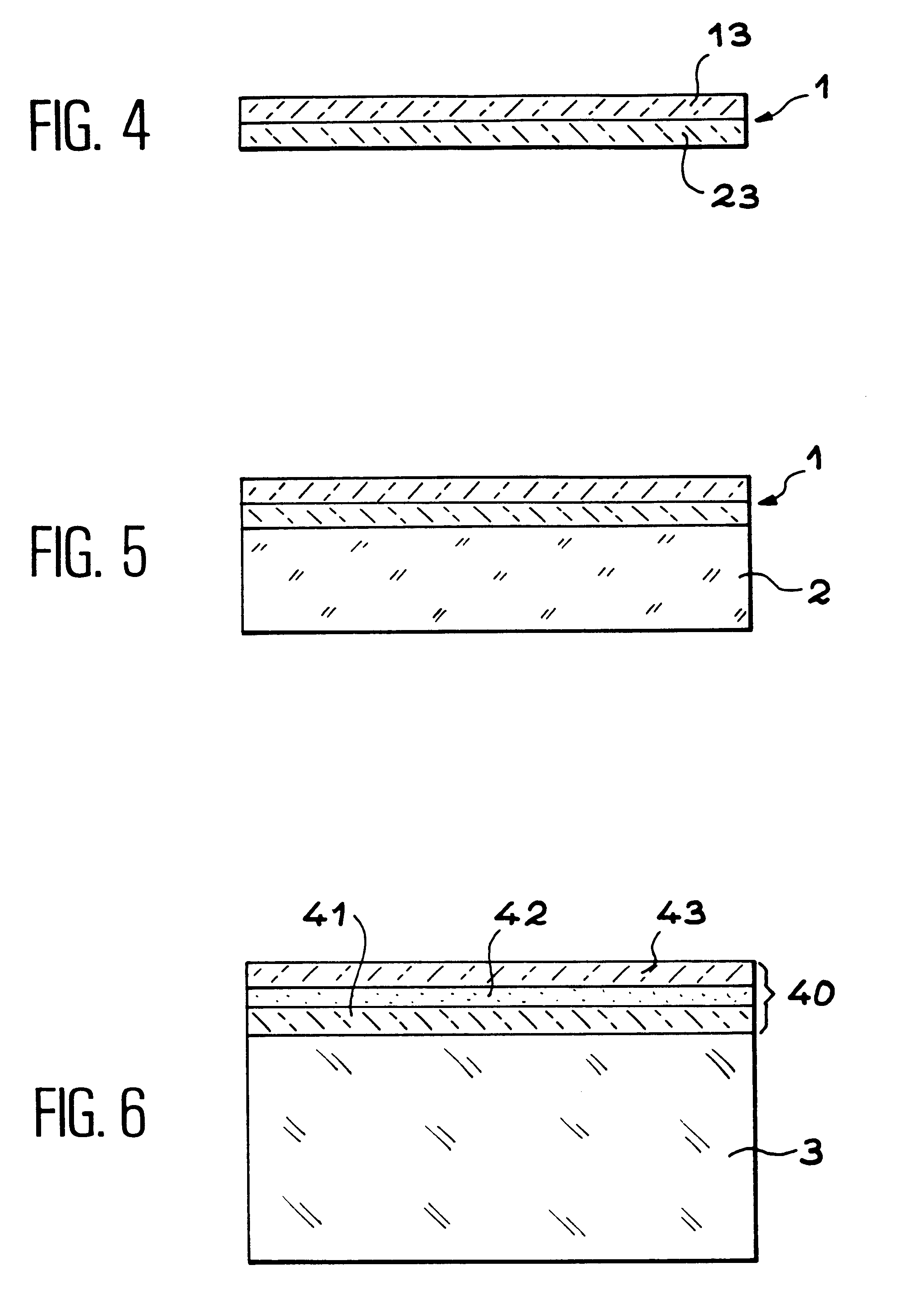Method for producing a thin membrane and resulting structure with membrane
- Summary
- Abstract
- Description
- Claims
- Application Information
AI Technical Summary
Benefits of technology
Problems solved by technology
Method used
Image
Examples
Embodiment Construction
The substrates used to produce the thin layers may be solid or already comprise one or more thin layers deposited by epitaxy for example.
The implantation of gas species may be conducted, for each substrate, at different energies and doses. It may also be conducted using different gas species.
The fixing of the substrates onto one another may be made by bonding through molecular adhesion optionally with the presence of an intermediate layer which may have different functions. It may be chosen on account of its electronic and / or optic and / or mechanical and / or thermal properties. It may be insulating or conductive. Its mechanical properties may be chosen such as to rigidify the structure and enable a reduction in required thickness.
The separation of the thin layers with their substrates may be made in simultaneous or consecutive manner. Separation may be made using heat treatment and / or by means of mechanical forces applied simultaneously or after optional heat treatment. If the purpose...
PUM
 Login to View More
Login to View More Abstract
Description
Claims
Application Information
 Login to View More
Login to View More - R&D
- Intellectual Property
- Life Sciences
- Materials
- Tech Scout
- Unparalleled Data Quality
- Higher Quality Content
- 60% Fewer Hallucinations
Browse by: Latest US Patents, China's latest patents, Technical Efficacy Thesaurus, Application Domain, Technology Topic, Popular Technical Reports.
© 2025 PatSnap. All rights reserved.Legal|Privacy policy|Modern Slavery Act Transparency Statement|Sitemap|About US| Contact US: help@patsnap.com



